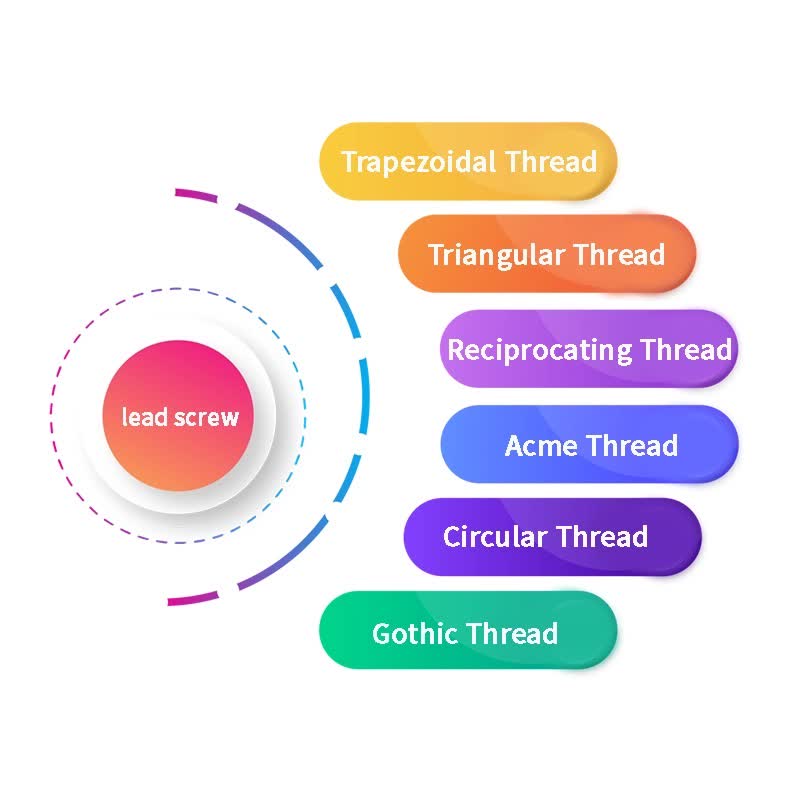1. Structural Characteristics of Lead Screw Pairs: 1) Simple and compact structure, easy to process
Composed of matching screw shaft and nut, their simple design enables compact sizing for space-constrained systems. Mature thread processing techniques reduce production difficulty and costs, facilitating mass application.
2) Large reduction ratio (self-locking), smooth movement
They provide significant speed reduction, with small screw shaft rotation translating to large nut displacement. Friction-induced self-locking secures the position when the driving force is removed, while operation remains stable with minimal vibration.
3) Convenient to ensure and improve transmission accuracy
Precision of thread profile, pitch, and alignment—controllable via mature manufacturing and post-processing like grinding—ensures high initial accuracy and room for enhancement, suiting precision machinery.
4) Relatively large frictional resistance and low transmission efficiency
Sliding friction between threads increases resistance, demanding greater driving force and resulting in lower efficiency compared to rolling friction-based mechanisms like ball screws, limiting high-speed/high-power use.
5) Exist lateral clearance, with reverse idle stroke
Radial gaps from manufacturing tolerances cause reverse idle stroke—driving parts must move a distance before reversing driven parts—impacting positioning accuracy in frequent-reversal applications.
6) Micro and low-speed feeding has a crawling phenomenon
Static/dynamic friction and system elasticity lead to uneven, jerky motion at micro/low speeds, hindering micro-positioning and precision machining quality.
2. The four basic transmission modes of lead screw-nut pairs are as follows:
1) The screw shaft rotates while the nut moves axially
Motor-driven screw rotation converts to axial nut movement, a common setup in linear actuators for displacement needs.
2) The screw shaft rotates and moves axially while the nut remains stationary
Screw combines rotation and axial movement (via dual-force driving mechanisms) with a fixed nut, useful in tools requiring rotational cutting and axial feeding.
3) The screw shaft moves axially while the nut rotates
Axial screw movement passively drives nut rotation, applied in systems converting linear motion to rotation, such as certain gearboxes.
4) The screw shaft remains stationary while the nut rotates and moves axially
Fixed screw guides rotating, axially moving nuts (driven externally). Nut displacement depends on rotation speed and thread pitch, suiting lifting devices or sliding platforms.
